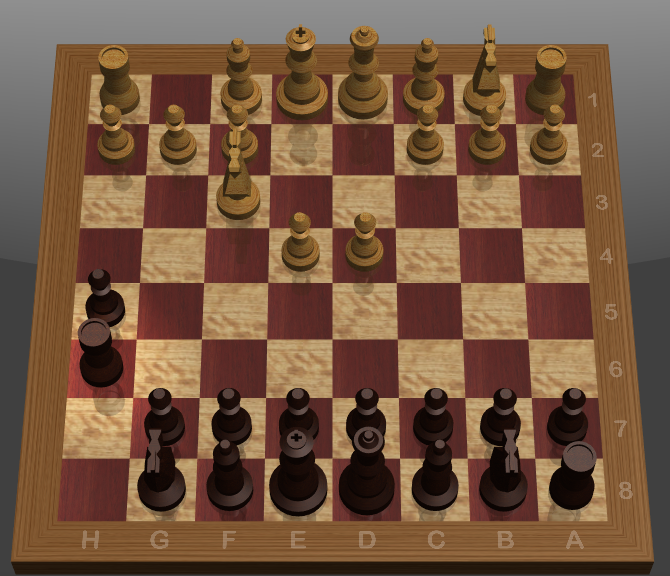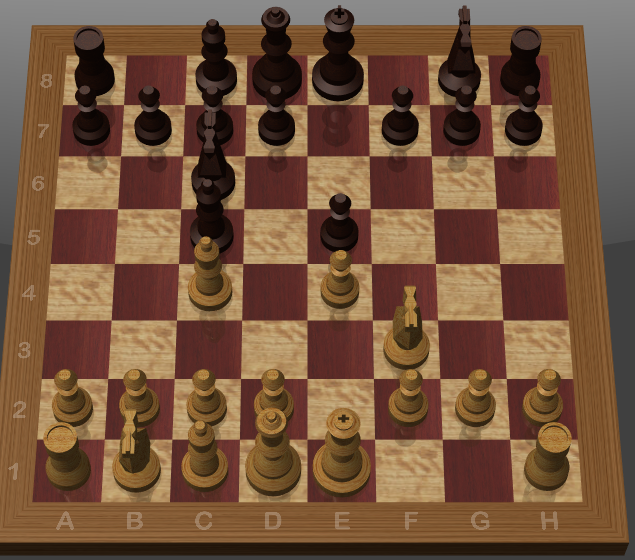Gambits involve sacrificing a piece to secure an advantage. The king’s gambit involves starting with e4 and then sacrificing either the white f or d pawns in a future move. In this opening, white’s second move is to move to f4 and threaten black’s pawn at e5.
- e4 e5
- f4
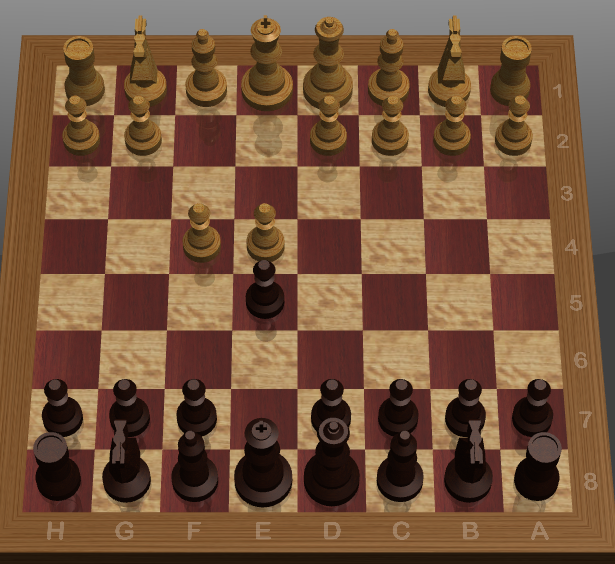
White is trying to develop, control the center, and set up an attack at f7. With this in mind, black should move accordingly. After 2…e5xf4, black is ahead a pawn.
2. …e5xf4
3. Nf3 g5
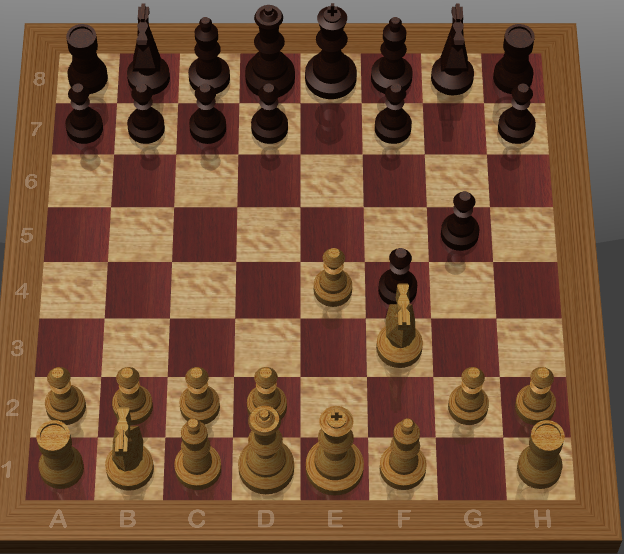
After 2… e5xf4, white develops the king knight. In theory next would be the bishop followed by castling. Black responds with g5. This would seem to put black behind in development and break some of the rules (there are a lot of black pawn moves this early in the game). However, if white proceeds with its developmental plan this is going to allow black to move to g4 and threaten the knight.
4. Bc4 g4
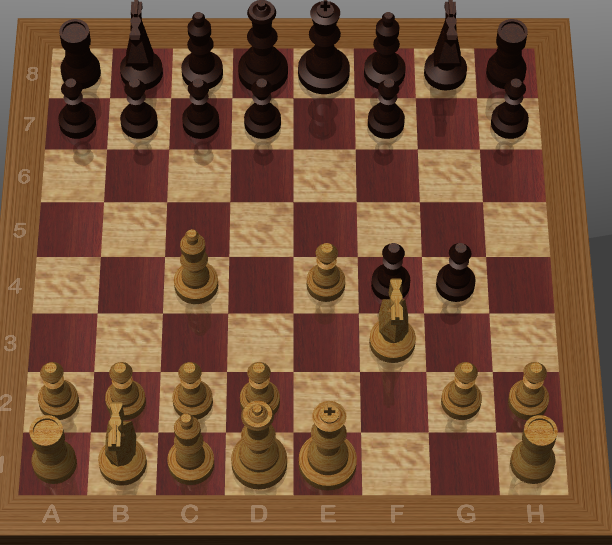
At this point white can move the knight, which allows for Qh4+ or white can castle, lose the knight, and then capture the pawn with Qxf3 in order to maintain the two pawns protecting the castled king. The king will be vulnerable on this side because of the missing f pawn.
The next few posts are going to deal with approaches to the gambit that hopefully avoid this situation for white.

